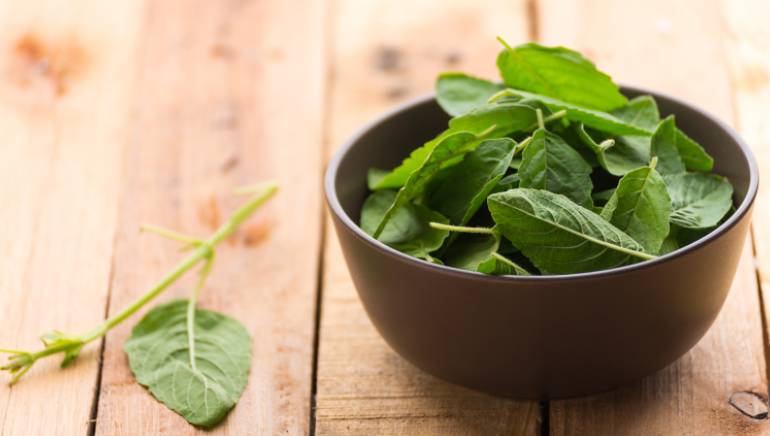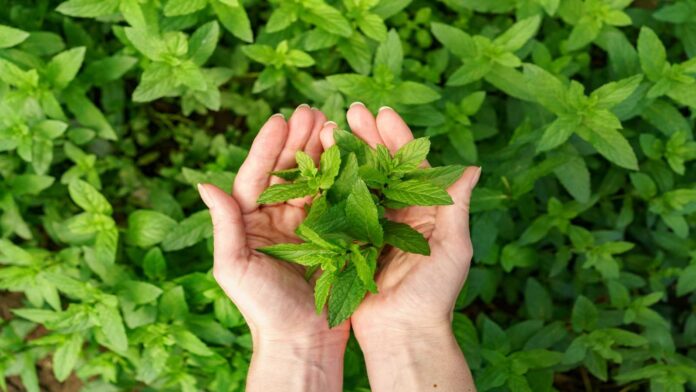How neem and tulsi herbs may also help your pores and skin in the course of the monsoon. Study which Ayurvedic herb is greatest for glowing pores and skin within the wet season
The wet season is a gorgeous time. It brings lush greenery and a refreshing scent. Nonetheless, our pores and skin can face issues throughout this season. Excessive humidity, sticky sweat, and damp garments may cause points like oily pores and skin, rashes, and physique odour. Whereas we benefit from the cooling rain, it’s necessary to handle our pores and skin to maintain it wholesome and glowing. One trusted skincare tip in the course of the monsoon is to make use of neem or tulsi-infused water. Is that this only a custom, or do these Ayurvedic herbs actually assist? Let’s take a look at how they evaluate.
Does monsoon trigger pores and skin issues?
Throughout the humid months, the air is sticky, inflicting sweat to linger moderately than evaporate. Tightly becoming garments can exacerbate the scenario, turning your pores and skin right into a hotspot for germs and fungi. If uncared for, you might end up dealing with pores and skin points in areas like your underarms, ft, and inside thighs. Moreover, the damp atmosphere is a favorite habitat for micro organism, resulting in unwelcome physique odour, as per the American Society for Microbiology. However fret not! Step one to preserving your pores and skin recent is common cleaning, and that’s the place Ayurvedic herbs may also help.
What is healthier for pores and skin: neem or tulsi?
Each neem and tulsi have been integral to conventional Indian skincare for hundreds of years.
Neem, or Azadirachta indica, is a tree from the Indian subcontinent recognized for its quite a few advantages. Its leaves, bark, seeds, and fruits include compounds with antibacterial, antifungal, and antiviral properties, as per Frontiers in Pharmacology. Utilized in conventional drugs and pure pest management, neem is fashionable for selling dental well being, treating pores and skin issues, and supporting general wellness.
- Antimicrobial properties: Neem is famend for its potential to fight germs and micro organism, thereby successfully lowering the chance of pores and skin infections.
- Anti-inflammatory: “It calms irritated pores and skin, making it good for these battling rashes or redness”, Dr Sweety Darall Tomar, Dermatologist, tells Well being Photographs.
- Clear pores and skin hero: Common use may also help maintain your pores and skin clear and vibrant, particularly in the course of the monsoon.

Tulsi, or holy basil, is a sacred Ayurvedic herb recognized for its medicinal properties. Valued in Ayurvedic drugs, it promotes well being and well-being. “Recognised by its inexperienced or purple leaves, Tulsi is utilized in teas, important oils, and ayurvedic natural cures, with antibacterial, antiviral, and anti inflammatory advantages”, explains Dr Tomar. It additionally performs a job in spiritual rituals as a logo of purity and advantage.
- Pure defend: Tulsi acts as a protecting barrier towards germs and micro organism.
- Refreshes pores and skin: It helps soothe irritation and redness, making your pores and skin really feel revitalised.
- Stability: “Tulsi is thought to stability oily pores and skin, a standard problem throughout humid climate”, advises the dermatosurgeon.
Whereas each these herbs are potent, your selection might rely in your distinctive pores and skin wants. Neem shines in addressing infections and irritation, whereas tulsi is the go-to for refreshment and balancing oily pores and skin.
In the end, it comes all the way down to what your pores and skin craves. Why not incorporate each? You may alternate their use to reap the total spectrum of advantages. Whether or not you select neem, tulsi, or each, your pores and skin will thanks for the additional care.
Advantages of Ayurvedic herbs within the monsoon
“Neem and tulsi might be nice for prevention, however they aren’t a one-stop answer for extreme infections. For those who expertise persistent rashes, itching, or another regarding pores and skin points, it’s greatest to seek the advice of a dermatologist. Merging easy ayurvedic natural care with skilled steering may also help maintain your pores and skin wholesome and glowing all season lengthy,” suggests the dermatologist.
- Retains infections at bay: Utilizing neem or tulsi in your bathtub water may also help fight fungal progress, which is rampant in the course of the wet season.
- Naturally controls physique odour: By lowering micro organism in your pores and skin, these ayurvedic herbs aid you keep recent with out counting on harsh deodorants.
- Soothes itchy pores and skin: Humidity can wreak havoc on delicate pores and skin. Each neem and tulsi naturally calm irritation and supply aid from itching.
- Light and secure: Not like business antiseptics, ayurvedic herbs are light and appropriate for day by day use, offering light care in your pores and skin.


